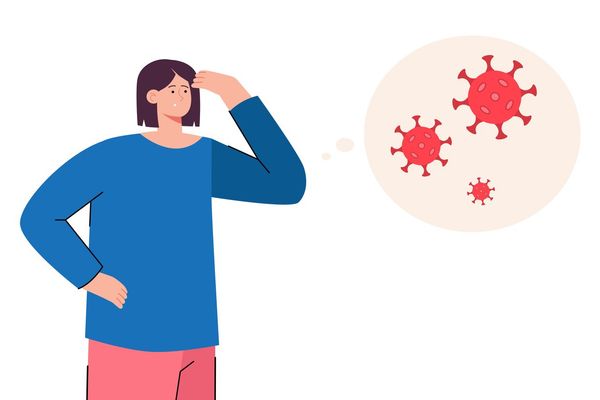Jennifer Atkinson, University of Washington
The coronavirus pandemic has set off a global gardening boom.
In the early days of lockdown, seed suppliers were depleted of inventory and reported "unprecedented" demand. Within the U.S., the trend has been compared to World War II victory gardening, when Americans grew food at home to support the war effort and feed their families.
The analogy is surely convenient. But it reveals only one piece in a much bigger story about why people garden in hard times. Americans have long turned to the soil in moments of upheaval to manage anxieties and imagine alternatives. My research has even led me to see gardening as a hidden landscape of desire for belonging and connection; for contact with nature; and for creative expression and improved health.
These motives have varied across time as growers respond to different historical circumstances. Today, what drives people to garden may not be the fear of hunger so much as hunger for physical contact, hope for nature's resilience and a longing to engage in work that is real.
Why Americans garden
Prior to industrialization, most Americans were farmers and would have considered it odd to grow food as a leisure activity. But as they moved into cities and suburbs to take factory and office jobs, coming home to putter around in one's potato beds took on a kind of novelty. Gardening also appealed to nostalgia for the passing of traditional farm life.
For black Americans denied the opportunity to abandon subsistence work, Jim Crow-era gardening reflected a different set of desires.
In her essay "In Search of Our Mothers' Gardens," Alice Walker recalls her mother tending an extravagant flower garden late at night after finishing brutal days of field labor. As a child, she wondered why anyone would voluntarily add one more task to such a difficult life. Later, Walker understood that gardening wasn't just another form of labor; it was an act of artistic expression.
Particularly for black women relegated to society's least desirable jobs, gardening offered the chance to reshape a small piece of the world in, as Walker put it, one's "personal image of Beauty."
This isn't to say that food is always a secondary factor in gardening passions. Convenience cuisine in the 1950s spawned its own generation of home-growers and back-to-the-land movements rebelling against a mid-century diet now infamous for Jell-O mold salads, canned-food casseroles, TV dinner and Tang.
For millennial-era growers, gardens have responded to longings for community and inclusion, especially among marginalized groups. Immigrants and inner-city residents lacking access to green space and fresh produce have taken up "guerrilla gardening" in vacant lots to revitalize their communities.
In 2011, Ron Finley – a resident of South Central L.A. and self-identified "gangsta gardener" – was even threatened with arrest for installing vegetable plots along sidewalks.
Such appropriations of public space for community use are often seen as threats to existing power structures. Moreover, many people can't wrap their heads around the idea that someone would spend time cultivating a garden but not reap all of the rewards.
When reporters asked Finley if he were concerned that people would steal the food, he replied, "Hell no I ain't afraid they're gonna steal it, that's why it's on the street!"
Gardening in the age of screens
Since the lockdown began, I've watched my sister Amanda Fritzsche transform her neglected backyard in Cayucos, California, into a blooming sanctuary. She has also gotten into Zoom workouts, binged on Netflix and joined online happy hours. But as the weeks stretch into months, she seems to have less energy for those virtual encounters.
Gardening, on the other hand, has overtaken her life. Plantings that started out back have expanded around the side of the house, and gardening sessions have stretched later into the evening, when she sometimes works by headlamp.
When I asked about her new obsession, Amanda kept returning to her unease with screen time. She told me that virtual sessions gave a momentary boost, but "there's always something missing … an empty feeling when you log off."
Many can probably sense what's missing. It's the physical presence of others, and the opportunity to use our bodies in ways that matter. It's the same longing for community that fills coffee shops with fellow gig workers and yoga studios with the heat of other bodies. It's the electricity of the crowd at a concert, the students whispering behind you in class.
And so if the novel coronavirus underscores an age of distancing, gardening arises as an antidote, extending the promise of contact with something real. My sister talked about this, too: how gardening appealed to the whole body, naming sensory pleasures like "hearing song birds and insects, tasting herbs, the smell of dirt and flowers, the warm sun and satisfying ache." While the virtual world may have its own ability to absorb attention, it is not immersive in the way gardening can be.
But this season, gardening is about more than physical activity for the sake of activity. Robin Wallace, owner of a photo production business in Camarillo, California, noted how the lockdown made her professional identity "suddenly irrelevant" as a "non-essential" worker. She went on to point out a key benefit of her garden: "The gardener is never without a purpose, a schedule, a mission."
As automation and better algorithms make more forms of work obsolete, that longing for purpose gains special urgency. Gardens are a reminder that there are limits to what can be done without physical presence. As with handshakes and hugs, one cannot garden through a screen.
You might pick up skills from YouTube, but, as gardening icon Russell Page once wrote, real expertise comes from directly handling plants, "getting to know their likes and dislikes by smell and touch. 'Book learning' gave me information," he explained, "but only physical contact can give any real … understanding of a live organism."
Filling the void
Page's observation suggests a final reason why the coronavirus pandemic has ignited such a flurry of gardening. Our era is one of profound loneliness, and the proliferation of digital devices is only one of the causes. That emptiness also proceeds from the staggering retreat of nature, a process underway well before screen addiction. The people coming of age during the COVID-19 pandemic have already witnessed oceans die and glaciers disappear, watched Australia and the Amazon burn and mourned the astonishing loss of global wildlife.
Perhaps this explains why stories of nature's "comeback" are continually popping up alongside those gardening headlines. We cheer at images of animals reclaiming abandoned spaces and birds filling skies cleared of pollution. Some of these accounts are credible, others dubious. What matters, I think, is that they offer a glimpse of the world as we wish it could be: In a time of immense suffering and climate breakdown, we are desperate for signs of life's resilience.
My final conversation with Wallace offered a clue as to how this desire is also fueling today's gardening craze. She marveled at how life in the garden continues to "spring forth in our absence, or even because of our absence." Then she closed with an insight at once "liberating" and "humiliating" that touches on hopes reaching far beyond the nation's backyards: "No matter what we do, or how the conference call goes, the garden will carry on, with or without us."
Jennifer Atkinson, Senior Lecturer, Environmental Studies, University of Washington
This article is republished from The Conversation under a Creative Commons license. Read the original article.







